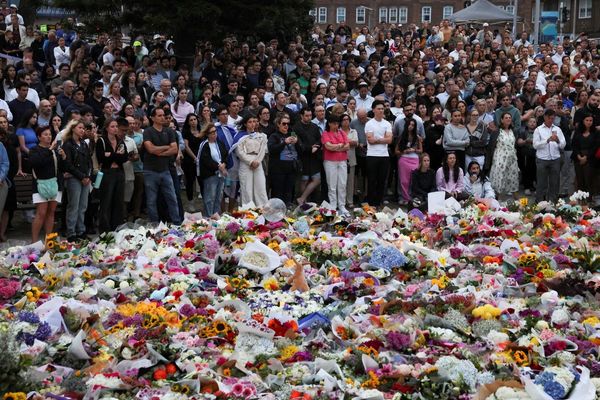
The Queensland Liberal National party’s first state budget in a decade will grow the size of the public sector, increase government spending and entrench deficits for the foreseeable future.
The treasurer, David Janetzki, said his “no austerity” budget – the first by the state’s conservatives since Campbell Newman lost power in 2015 – sought to end “scare campaigns” about his party’s record of job cuts and asset sales.
In the process, the state’s total debt is now projected to top $200bn for the first time.
Ratings agency S&P said the budget “highlights a sharp deterioration in the state’s finances”.
An S&P bulletin warned on Tuesday that its credit rating for the state, currently at AA+ for long-term debt, “remains elevated”.
Among the announcements is the introduction of a home equity scheme that would allow first home buyers earning up to $150,000 a year to buy a home with a 2% deposit.
The government will also continue to fund many of the cost-of-living relief measures introduced under Labor, including 50c public transport fares, sports vouchers and energy rebates. The LNP had campaigned on promises not to cut these programs and has had to find additional money to keep the cheap fares permanently.
Janetzki said Labor had “cheapened the budget papers last year to nothing more than an advertising hoarding”.
“The adults are back,” he said.
Queensland’s operating deficit for 2025-26 is set to top $8.6bn, up from the $5.4bn expected.
Two of Queensland’s key income streams – GST revenue and coal royalties – are both expected to drop next year, ripping billions from the state’s bottom line.
The budget papers warn of a likely downgrade by ratings agencies as a result of the state’s worsening fiscal condition: “A long-term deterioration of Queensland’s fiscal position has increased the likelihood of further heightened interest payments across the foreseeable future.”
Janetzki said: “We’re being squeezed on revenues. GST and coal royalties. We’re going to apply expense discipline in the years ahead.”
He said state debt, on track to hit $205.7bn over the forward estimates, was lower than had been predicted under Labor.
That figure is disputed: it comes from a mid-year update delivered by the new government taking into account its claims that Labor had hidden “vast and broad” cost blowouts that had not been on the books.
Compared with Labor’s 2024-25 budget, debt is now forecast to be higher across the forward estimates.
The premier, David Crisafulli, and Janetzki told reporters there had been a need to increase frontline staffing levels, spending and debt to repair service delivery problems – particularly in relation to health, youth justice and policing – that had emerged under Labor.
“We are front-loading investment into jobs and services,” Janetzki said. “Through the calm and methodical approach we’ve taken, we have laid down a path to surplus.”
With the 2032 Olympic Games on the horizon, the government has allocated $950m over four years for the construction of an athletes’ village, and $864m for “the first minor venues projects approved for procurement”.
The centrepiece announcement of budget day was a shared equity scheme for 1,000 first home buyers, covering homes up to $1m. Requiring just a 2% deposit, Janetzki called it the “most generous in the country”. He rejected suggestions this could lead new buyers into mortgage stress.
The parents of every primary school-age child will also receive $100 from 1 January next year. That comes on top of an existing $200 rebate for children’s sports costs.
The last time an LNP government delivered its first budget, the former premier Campbell Newman announced the sacking of 14,000 public sector workers. Under Janetzki, the headcount increases by 6,073.
Most of these new workers – about 4,700 – will be within the health service. There will also be additional hiring in the Department of Education and the Queensland police service.
But wages look to be likely to stall, triggering a likely fight with public sector unions who are pushing for a better pay offer.
Employee expenses, the largest expense category, are contained to a “more sustainable average annual rate of 3.5 per cent” for the four years after 2025-26, according to the budget. That figure includes both headcount and wages. The government has offered an increase of 3% next year and 2.5% for the following years.







